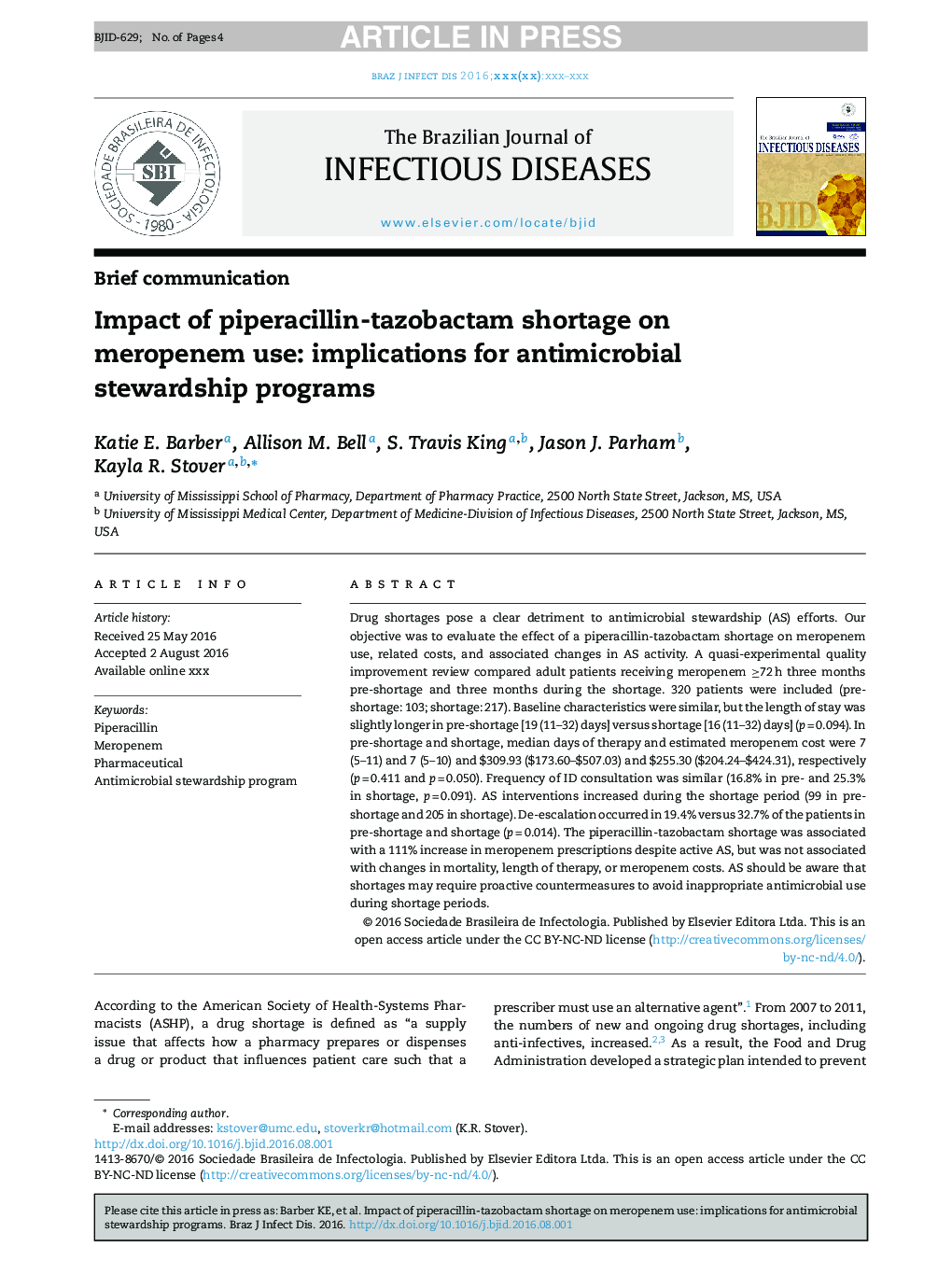| Article ID | Journal | Published Year | Pages | File Type |
|---|---|---|---|---|
| 8736793 | The Brazilian Journal of Infectious Diseases | 2016 | 4 Pages |
Abstract
Drug shortages pose a clear detriment to antimicrobial stewardship (AS) efforts. Our objective was to evaluate the effect of a piperacillin-tazobactam shortage on meropenem use, related costs, and associated changes in AS activity. A quasi-experimental quality improvement review compared adult patients receiving meropenem â¥72 h three months pre-shortage and three months during the shortage. 320 patients were included (pre-shortage: 103; shortage: 217). Baseline characteristics were similar, but the length of stay was slightly longer in pre-shortage [19 (11-32) days] versus shortage [16 (11-32) days] (p = 0.094). In pre-shortage and shortage, median days of therapy and estimated meropenem cost were 7 (5-11) and 7 (5-10) and $309.93 ($173.60-$507.03) and $255.30 ($204.24-$424.31), respectively (p = 0.411 and p = 0.050). Frequency of ID consultation was similar (16.8% in pre- and 25.3% in shortage, p = 0.091). AS interventions increased during the shortage period (99 in pre-shortage and 205 in shortage). De-escalation occurred in 19.4% versus 32.7% of the patients in pre-shortage and shortage (p = 0.014). The piperacillin-tazobactam shortage was associated with a 111% increase in meropenem prescriptions despite active AS, but was not associated with changes in mortality, length of therapy, or meropenem costs. AS should be aware that shortages may require proactive countermeasures to avoid inappropriate antimicrobial use during shortage periods.
Related Topics
Life Sciences
Immunology and Microbiology
Immunology and Microbiology (General)
Authors
Katie E. Barber, Allison M. Bell, S. Travis King, Jason J. Parham, Kayla R. Stover,
